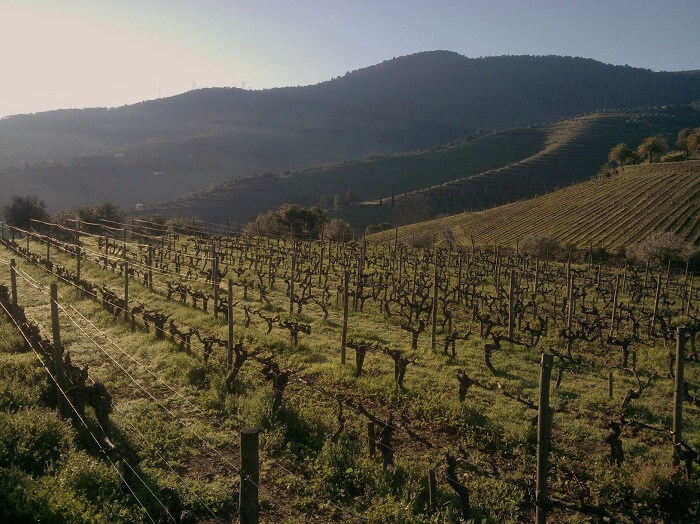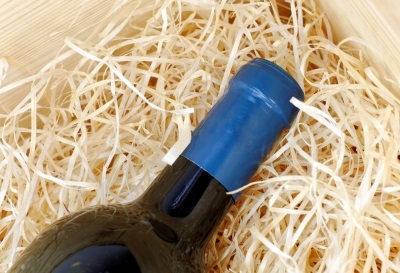Text Patrícia Pais Leite
What is the meaning of “DOC”, that we see so many times on the bottles of Portuguese wines? Is it the same as “Denominação de Origem” (Portuguese term for “Designation of Origin”)? And what is the meaning of “Vinho Regional” (Regional Wine)? Why are there also other wines that are neither “DOC” nor “Vinho Regional”? These are questions that we intend to explain here.
Legend
DO: Designation of Origin;
GI: Geographical Indication;
Wine products: still wines, sparkling wines, semi-sparkling wines, liqueur wines, wine vinegars, wine spirits and grape marc spirits;
Wine products certification: validation process of the product conformity with the DO´s or GI´s requirements defined by the Certifying Body, which is pointed out, in the case of the bottled products, through the guarentee seal placed in the bottle.
The Concepts
“Queijo Serra da Estrela” (Serra da Estrela Cheese), “Carne Barrosã” (Barrosã Meat), “Mel dos Açores” (Azores Honey), “Azeite de Moura” (Moura Olive Oil), “Pêra Rocha do Oeste” (Pear from the West) and also “Ovos-moles de Aveiro” (Sweet Eggs from Aveiro), are names we are familiar with and which we associate with quality products, certified and having a certain geographical origin. These are products registered in the European Union as agricultural products or foodstuff with Protected Designation of Origin or Protected Geographical Indication.
And in the wine sector we are all familiar with names such as “Alentejo”, “Douro”, “Vinho Verde”, “Trás-Os-Montes”, “Dão”, “Bairrada”, “Ribatejo”, among others.

Queijo Serra Estrela – in confrariadoqueijoserradaestrela.com
In fact, it was in the wine sector that was born the first protection system of a Designation of Origin, in 1756, with the creation of the Douro Demarcated Region. Currently, due to the European laws in force, the concept of quality wines is based namely on the specific characteristics attributable to its geographical origin. Such wines are identified in the market via Designations of Origin (DO) or Geographical Indications (GI).
In the wine sector, a DO is the geographic name of a region (or a traditional name, associated with a geographical origin or not), used to identify a wine product:
– whose quality or characteristics are essentially or exclusively due to a particular geographical environment with its inherent natural (e.g: climate, soil, grape varieties) and human factors (e.g: vinification techniques);
– originated from grapes exclusively from that region;
– and whose production occurs within that region.
The production area of a DO is the respective Demarcated Region.

Pinhão, Douro © Blend All About Wine, Lda.
The concept of GI differs from the concept of DO essentially in the following aspects:
– the quality, reputation, or other characteristics of the product are attributable to that geographical origin, but the human factors are not so relevant as in the DO;
– at least 85% of the grapes used come exclusively from that region, but not all the grapes, as in the DO.
Note that the production shall also occur within the delimited geographical area.
In addition to the conceptual distinctions, the DO also differs from the GI due to a higher demand at the level of the certification requirements of the products, in particular the alcoholic strength, grape varieties used, vinification methods, oenological practices, organoleptic characteristics, among others, are concerned.

Image courtesy of Rawich – in FreeDigitalPhotos.net
In fact, the use of each DO is subjected to compliance with specific rules of production and trade, part of a specific regulation, which disciplines the delimitation of the region of origin, the nature of the soil, the grape varieties apt for production, the cultural practices and guiding system, the yields per hectare, the vinification processes, the oenological practices, the alcohol strength, the physicochemical and organoleptic characteristics, the specific labelling rules (where necessary).
For the use of each IG, there is also a specific production and trade regulation, but it should only define, at least, the delimitation of the region of origin, the grape varieties and the specific rules of production and presentation, designation and labelling, whenever necessary.
The Official Designations
Until August 2009, the designations of wines with DO were several and somewhat imperceptible to the consumer. We could find on the labels “Quality Wine PSR” (Quality Wine Produced in a Specific Region), “Quality Sparkling Wine PSR” (Quality Sparkling Wine Produced in a Specific Region), “Quality Semi-Sparkling PSR” (Quality Semi-Sparkling Wine Produced in a Specific Region) and “Quality Liqueur Wine PSR” (Quality Liqueur Wine Produced in a Specific Region). Each of these designations matched the respective wine category: Still Wine, Sparkling Wine, Semi-Sparkling Wine and Liqueur Wine.

Glasses © Blend All About Wine, Lda.
With the current European classification in force since 1st August 2009, a wine that fulfils the requirements of a DO is simply called a “Wine with DO”, regardless of its category.
In turn, a wine that fulfills the requirements of a GI is called “Wine with Geographical Indication”, whereas before it was called a “Table Wine with Geographical Indication”.
In terms of categories, both a “Wine with DO” and a “Wine with GI” can be a still wine, a sparkling wine, a semi-sparkling wine or a liqueur wine (About this matter, see our last article).

Image courtesy of Rawich in FreeDigitalPhotos.net
On the labelling of Portuguese “Wines with DO”, the terms used are “Denominação de Origem Controlada” / “DOC” or “Denominação de Origem Protegida” (Portuguese terms for “Protected Designation of Origin”).
For Portuguese “Wines with GI”, it can be used the term “Vinho Regional” or “Vinho da Região de” or “Indicação Geográfica Protegida” (Portuguese terms for “Protected Geographical Indication”). It should be pointed out that “Vinho Regional” is not associated with a DO but with a GI.
And the wines that are neither “DOC” or “Vinho Regional”? They are classified as “Wines without DO and without GI”, also called simply “Wines”. They correspond to the previous “Table Wines”.

Wine Official Designations © Blend All About Wine, Lda.
DO and GI Protection
By ensuring the genuine character and quality of the products, DO and IG also allow the protection of consumers and producers, the correct operation of the wine market and the promotion of quality products. For these reasons, DO and IG benefit from protection against any commercial use that affects them (misuse, imitation or evocation) or that unduly exploits its reputation.
The protection of each DO or IG and the respective control and certification process are the responsibility of the corresponding Certifying Body (Regional Wine Commissions, Instituto dos Vinhos do Douro e do Porto, I. P. – the Douro and Port Wines Institute – and Instituto do Vinho, do Bordado e do Artesanato da Madeira, I.P. – Institute of Wine, Embroidery and Handicraft of Madeira).
We can check that a bottled wine is certified as “Wine with DO or GI” through the guarentee seal placed in the bottle.




Leave a Reply